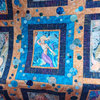QOD - Nov. 5, 2009 - Bindings
odessaquilts
14 years ago
More Discussions
Do you cut, fold, press, and sew your own bindings? Do you buy them pre-made?
How wide do you prefer to cut your strips/how wide is the finished binding showing on the top?
Do you prefer the binding to match some of the fabric in the quilt? Or do you want your binding to be neutral (like muslin, or black, or a solid)?
Tell us about your binding preferences and why you like it that way.

poldiceann
barbara_in_pa
Related Professionals
Frisco Furniture & Accessories · Midland Furniture & Accessories · Northridge Furniture & Accessories · Kendall Furniture & Accessories · Nashville Interior Designers & Decorators · Tahoe City Interior Designers & Decorators · Danvers Flooring Contractors · Mahwah Flooring Contractors · Milford Flooring Contractors · Monroe Flooring Contractors · Owatonna Flooring Contractors · Woodbury Flooring Contractors · Annandale Furniture & Accessories · Wichita Furniture & Accessories · Duluth Furniture & Accessoriesgrammyp
jennifer_in_va
calliope
karpet
karpet
geezerfolks_SharonG_FL
itsmesuzq
odessaquiltsOriginal Author
jck1210
toolgranny
User
toolgranny
love2sew
jennifer_in_va
mary_c_gw
User
magothyrivergirl
mary_c_gw
lola99
nanajayne
User
buteau3rd